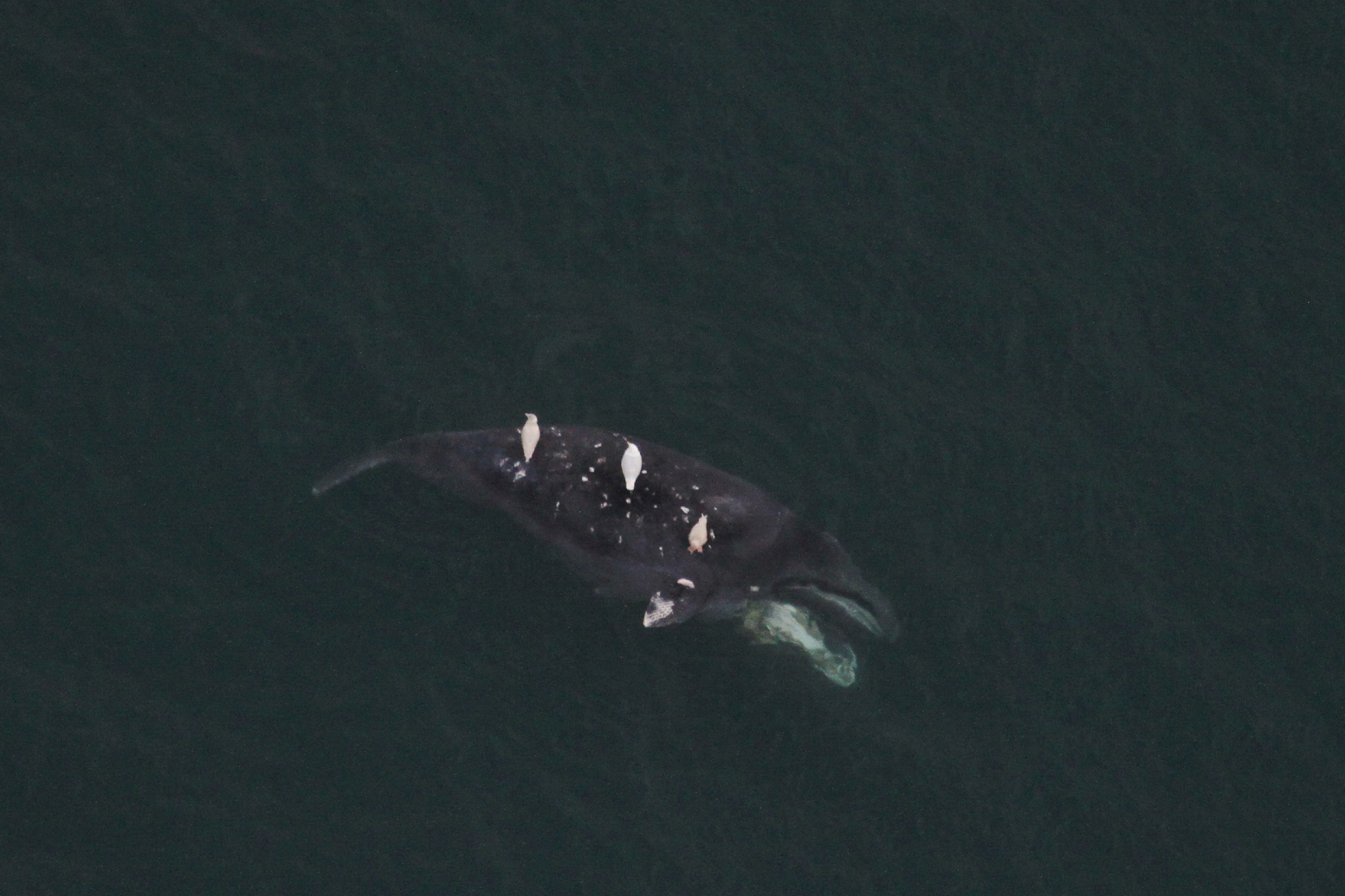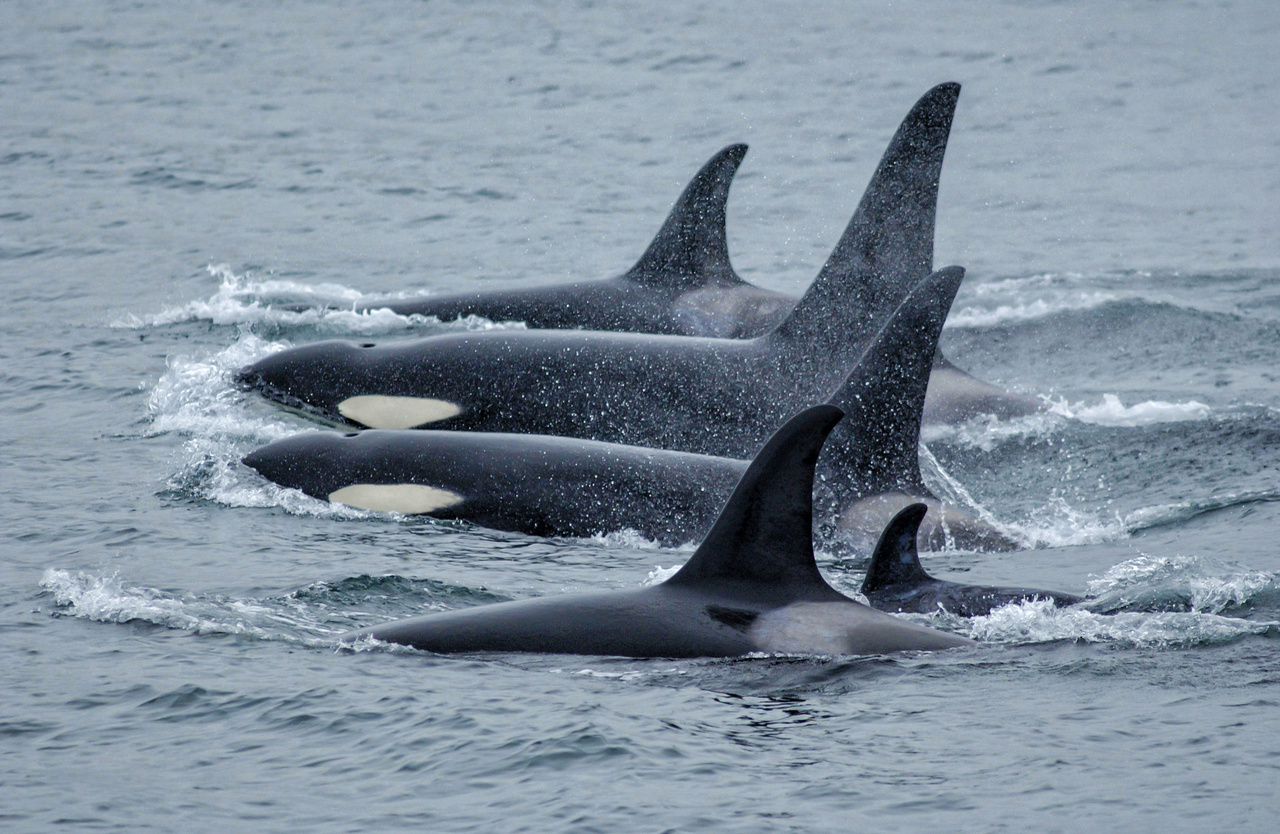Dead bowheads in Beaufort and Chukchi point to increased killer whale presence in Arctic
A new study found that 2019, an especially warm year, saw a spike in bowhead deaths caused by killer whales in Alaska's Arctic waters.

There are new signs that killer whales, which are swimming farther north and staying for longer periods of the year in Arctic waters, are increasingly preying on Alaska’s bowhead whales.
A newly published study found that 2019, an especially warm year in the region, also seems to have been an especially dangerous year for bowheads targeted by killer whales.
That year, 11 dead bowheads were found in the eastern Chukchi and western Beaufort seas, with seven of them identified as killer whale victims and the others with causes undetermined. That compares to the 33 dead bowheads found floating or beached in the region in the previous decade, from 2009 to 2018. Eighteen of them were identified as killer whale victims, according to a previous study by the same authors.
Along with the sheer numbers, the new study had another interesting finding about 2019, a year known for its warm Arctic Alaska waters and associated effects like seabird die-offs: a “drastic shift” from the eastern Chukchi to the western Beaufort as a place where bowhead carcasses were found, said lead author Amy Willoughby of the University of Washington and the National Oceanic and Atmospheric Administration’s Marine Mammal Laboratory in Seattle.
The new study detailing 2019 numbers and the previous 2020 study detailing 2009-2018 numbers comprise the first project to systematically examine causes of death for Alaska bowheads killed outside of the traditional Inupiat subsistence hunts. The project uses information gathered in the Aerial Surveys of Arctic Marine Mammals program that is funded by multiple federal agencies.

The authors, along with Willoughby, are other University of Washington and NOAA scientists, as well as colleagues from the North Slope Borough and University of Alaska Fairbanks.
Willoughby and her colleagues were also the first to assemble direct proof of killer whale predation on Alaska bowheads – a dead bowhead calf photographed in 2015 with bite marks on its flipper, mouth and jaw.
On its own, the new study holds too little information to show a trend. “Unfortunately, we do not have comparable data before 2009 in this portion of bowhead whale range, so we cannot determine what is normal or establish patterns without future data,” Willoughby said by email. Also unknown, she said, is how many dead bowheads went undetected – and how many of those were killer whale victims.
Still, the findings fit into a larger pattern, emerging in Alaska and elsewhere, of killer whales spending more time in Arctic waters and preying on marine mammals there. “This is likely because summer sea ice is moving farther north, sea water temperatures are rising, and sea ice is breaking up earlier in the spring and forming later in the fall,” Willoughby said.
Numerous studies and Indigenous whalers’ reports are documenting more killer whales spending more time and making more predation attempts in far-north waters.
A 2017 study led by Craig George, a longtime North Slope Borough biologist, found an increased frequency over time of killer whale-inflicted scars on subsistence-harvested bowheads. That study examined the body conditions of 514 bowheads harvested from 1990 to 2012.
A study published in 2018 tracked an increasing frequency of killer whale calls in the Chukchi in the fall months. The acoustic monitoring showed that they have substantially increased their post-summer presence, said the study, by Kate Stafford of the University of Washington.
On the Atlantic side of the Arctic, killer whales have been increasingly seen preying on narwhals. One recent study estimated that killer whales could kill more than 1,000 narwhals a year.
This story was first published by Alaska Beacon and is republished here under a Creative Commons license. You can read the original here.
This article has been fact-checked by Arctic Today and Polar Research and Policy Initiative, with the support of the EMIF managed by the Calouste Gulbenkian Foundation.
Disclaimer: The sole responsibility for any content supported by the European Media and Information Fund lies with the author(s) and it may not necessarily reflect the positions of the EMIF and the Fund Partners, the Calouste Gulbenkian Foundation and the European University Institute.
